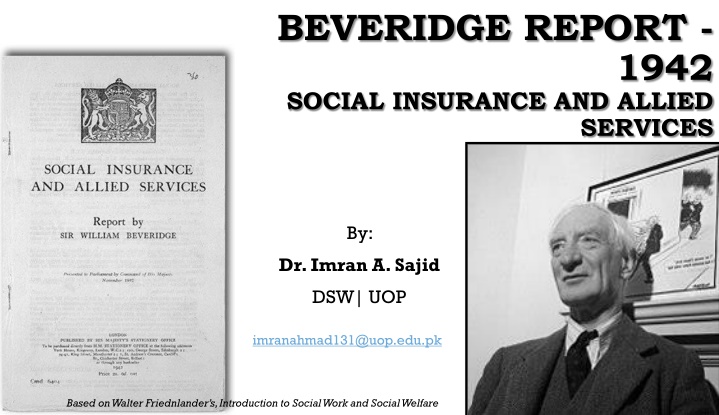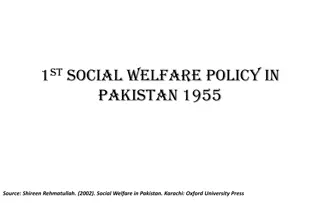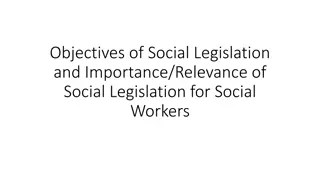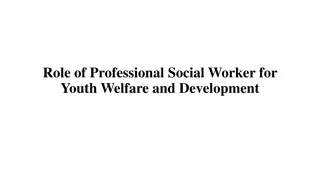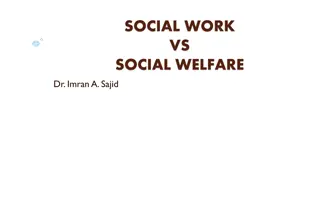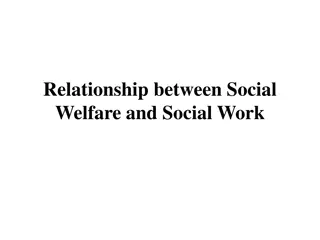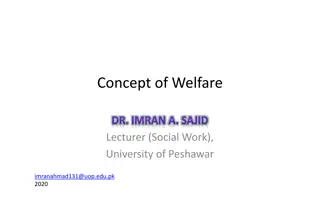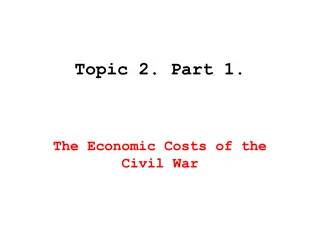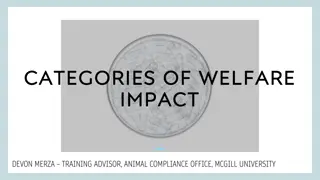The Beveridge Report and its Social Welfare Impact During World War II
The Beveridge Report, commissioned during the Second World War, led to significant social welfare reforms in Britain. Under the chairmanship of William Beveridge, the committee assessed the country's social services, paving the way for recommendations that shaped the future of social insurance and allied services. Beveridge, a notable economist, played a crucial role in addressing unemployment and economic issues. The report highlighted the need for comprehensive reforms in social assistance, health care, and pensions, impacting British society profoundly.
Download Presentation

Please find below an Image/Link to download the presentation.
The content on the website is provided AS IS for your information and personal use only. It may not be sold, licensed, or shared on other websites without obtaining consent from the author.If you encounter any issues during the download, it is possible that the publisher has removed the file from their server.
You are allowed to download the files provided on this website for personal or commercial use, subject to the condition that they are used lawfully. All files are the property of their respective owners.
The content on the website is provided AS IS for your information and personal use only. It may not be sold, licensed, or shared on other websites without obtaining consent from the author.
E N D
Presentation Transcript
BEVERIDGE REPORT - 1942 SOCIAL INSURANCE AND ALLIED SERVICES By: Dr. Imran A. Sajid DSW| UOP imranahmad131@uop.edu.pk Based on Walter Friednlander s, Introduction to Social Work and Social Welfare
THE BEVERIDGE REPORT During the dramatic hours of the Second World War, in 1941, when bombs were continuously falling outside the British parliament , the West Minster, the Britons started reforming their entire social welfare programmes..
In 1940, during the Second World War, the Labour Party entered into a coalition with the Conservative Party. On 10 June 1941 Arthur Greenwood, the Labour MP, announced the creation of an inter-departmental committee which would carry out a survey of Britain's social insurance and allied services:
The parliament appointed a high level committee under the Chairmanship of William Beveridge to survey the structure and efficacy of the entire social services and to make recommendations for necessary reforms
WILLIAM HENRY BEVERIDGE William Henry Beveridge, 1st Baron Beveridge, (born March 5, 1879,Rangpur, India died March 16, 1963,Oxford, Oxfordshire, England), He contributed many works to economics including Unemployment: A Problem of Industry (1909), Full Employment in a Free Society(1944), Insurance for All (1924), British Food Control (1928), Planning Under Socialism (1936), Pillars of Security (1948), Power and Influence (1953), and A Defence of Free Learning (1959). Economist interested in the causes and cures of unemployment since 1903. directed the London School of Economics and Political Science from 1919 until 1937 knighted in 1919 and was created a baron in 1946.
British Nobility is divided into Upper and Lower Nobility Upper Nobility duke, Marquess, Earl, Viscount Baron Lower Nobility Knight Baronet Esquire
The Beveridge Committee included representatives of all organizations of public assistance, social insurance, pensions, health, economic affairs, labour affairs, treasury, customs and excise, and friendly societies. The committee heard hundreds of discussions with citizens groups, ranging from chamber of commerce , manufacturers associations, commercial insurance companies labour unions, consumers cooperatives etc.
Purpose of the Report William Beveridge report attempted to find a way to gain Freedom From wants . Five (05) Giants The committee found out that five giants caused human sufferings , namely, Wants Ignorance, Squalor, and Disease, Idleness. Assumption The basic fact which was to be addressed was that personal and economic sufferings were mainly caused by disruption or loss of income in the modern industrial societies.
The Beveridge report devised a policy of social security in which social insurance is one measure. The main goal of social security was to guarantee a basic level of income for every citizen with his own efforts and to initiate the incentives of securing for self and the family.
This social security consisted of five programmes, namely 1. a unified and comprehensive system of social insurance. Public assistance programme to aid those people who were not covered sufficiently by social insurance benefits. Children allowances, providing a weekly allowance for each child after the first ( now-a-days the first one gets more allowance than the rest) a comprehensive free health and rehabilitation service for the entire population and the maintenance of full employment through public works in order to prevent mass unemployment in economic crisis. This proposal was meant to protect the entire population and not only the laboring class. It was a unified system and was administered by one ministry, the ministry of pensions and national Insurance coordinating the efforts of many organizations which were uncoordinated in the past. 2. 3. 4. 5.
This social security consisted of five programmes, namely 01. a unified and comprehensive system of social insurance. This proposal was meant to protect the entire population and not only the laboring class. It was a unified system and was administered by one ministry, the ministry of pensions and national Insurance coordinating the efforts of many organizations which were uncoordinated in the past. 02. Public assistance programme to aid those people who were not covered sufficiently by social insurance benefits. 03. Children allowances, providing a weekly allowance for each child after the first ( now-a-days the first one gets more allowance than the rest) 04. a comprehensive free health and rehabilitation service for the entire population and 05. the maintenance of full employment through public works in order to prevent mass unemployment in economic crisis.
Six PRINCIPLES were suggested for the procedure, namely, 1. A Unified administration 2. Comprehensive coverage 3. flat rate of contributions 4. flat rate of benefits 5. adequacy of all benefits to meet the basic needs of the recipients and 6. classification of the population. The report had suggested six groups of population , namely
The report was implemented in the shape of three acts of parliament namely National Insurance Act 1946, All persons of working age had to pay a weekly contribution and in return were entitled to a wide range of benefits, including Guardian s (or Orphans) Allowances, Death Grants, Unemployment Benefit, Widow s Benefits, Sickness Benefit, and Retirement Pension. National Health Service Act 1946 It provided for free mental and physical health services for everyone National Assistance Act 1948 It formally abolished the Poor Law system that had existed since the reign of Elizabeth I and established a social safety net for those who did not pay National insurance contributions (such as the homeless, the physically handicapped, and unmarried mothers) and were therefore left uncovered by the National Insurance Act 1946
CLASSIFICATION OF POPULATION 1. employees 2. employers and self-employed persons 3. house wives 4. adults who were not gainfully employed e.g. crippled, insane and invalid. 5. retired persons above working age. 6. Children below working age.
The National Insurance Act of 1946, reduced the no. of classes to three, namely, 1. Employed persons gainfully occupied in GB under a contract of service 2. Self-employed people gainfully occupied but under no control of an employer ; and 3. Non-employed person.
CONCLUSION Beveridge said that the underlying social philosophy of his plan was to secure Britons against wants and other social evils, and that social security should be rendered to preserve the personal freedom and responsibility of the individual for his family. Beveridge report became the foundation of the modern social welfare in the UK and a model for the world. The Post WWII reforms lead to the creation of Welfare State and the UK declared itself the 1st Welfare State in the World on 10th December 1948
